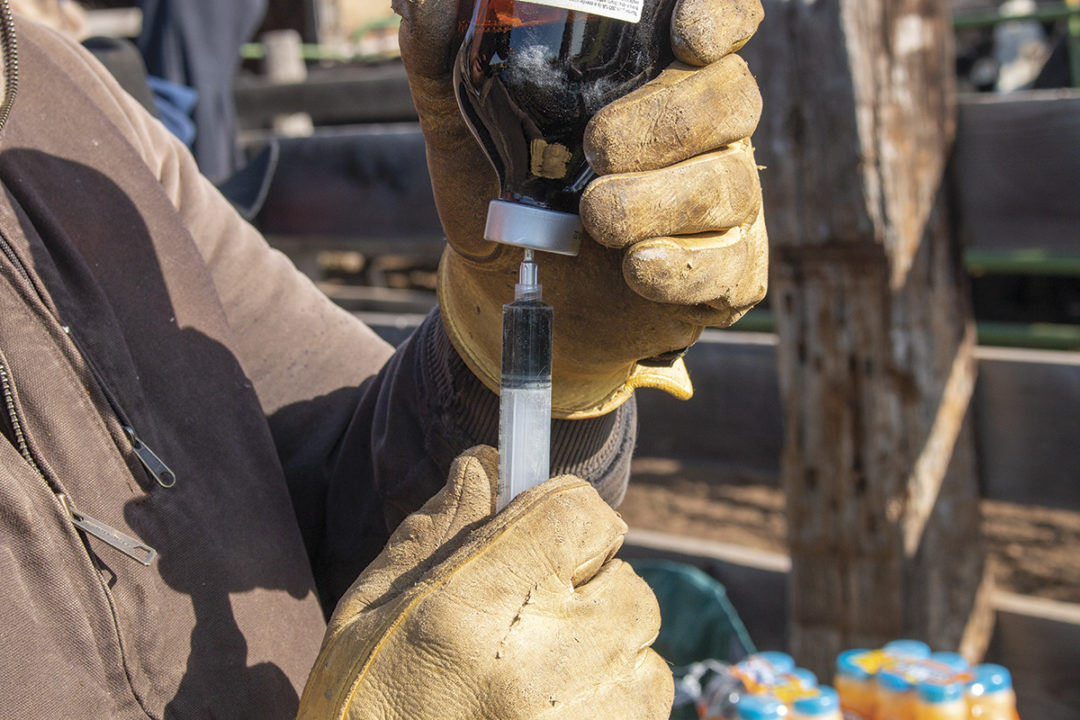It's officially spring; that means it is time to start planning for summer cattle work. However, this year it is important for ranchers to prepare for upcoming changes to the rules regarding purchasing medically important antibiotics. Currently, these antibiotics may be purchased over-the-counter at a veterinarian’s office or feed store. However, the Food and Drug Administration’s Center for Veterinary Medicine’s guidance for industry No. 263 will take effect this summer and change this type of availability.
It is important to note that this is not the Veterinary Feed Directive (VFD) that was implemented in 2017. The VFD allowed closer veterinarian oversight of antimicrobial use in animal feeds.
On June 11, 2023, all medically important antibiotics used for all companion and food animals must be purchased directly from the veterinarian or from a distributor with a veterinary prescription. Medically important antibiotics include the following and will require a prescription: injectable tylosin, injectable and intramammary penicillin, injectable and oral oxytetracycline, sulfadimethoxine and sulfamethazine, gentamicin, and cephapirin and cephapirin benzathine intramammary tubes. The full list of all the antibiotics can be found here and species-specific lists can be found here. At this time, livestock owners will still be able to purchase the following without a prescription: vaccines, dewormers, injectable and oral nutritional supplements, ionophores, pro/prebiotics and topical non-antibiotic treatments.
This rule requires livestock producers to have and maintain a veterinary client-patient relationship (VCPR) to purchase antibiotics directly from their veterinarian or from a distributor with the veterinarian’s prescription. A VCPR describes the relationship between a licensed veterinarian, the owner of the animal (client) and the animal (patient). Many might ask what a VCPR requires. Each state has slight differences in its VCPR definitions. However, VCPRs generally require:
- The veterinarian assumed the responsibility for making clinical judgments regarding the health of the animal and the need for medical treatment, and the client agreed to follow the veterinarian’s instructions.
- The veterinarian has sufficient knowledge of the animal to initiate at least a general or preliminary diagnosis of the animal’s medical condition. This means the veterinarian has recently seen and is personally acquainted with the keeping and care of the animal by examining the animal or by medically appropriate and timely visits to the premises where the animal is kept.
- The veterinarian is readily available or has arranged emergency coverage and follow-up evaluation in the event of adverse reactions or the failure of the treatment regimen.
Those who already have a VCPR in place and purchase antibiotics through their veterinary office will likely notice very little change to their routine. However, livestock owners who purchase antibiotics over-the-counter will need to reach out to a veterinarian to set up a time to establish a VCPR. Once a VCPR is established, the veterinarian will be allowed to write prescriptions when needed for livestock. Thus, it is incredibly important to maintain a relationship with a veterinarian. Additionally, ranchers are advised not to go stock up on antibiotics now because antibiotics have expiration dates, are sensitive to storage time and conditions, and are expensive – especially if a rancher is unable to purchase antibiotics due to expiring or improper storage conditions.
For more information, visit the FDA Animal & Veterinary webpage. Additionally, you can visit the FDA’s frequently asked questions for questions you might have concerning this new change.









